main
How to Make Food Safe Pottery on Pottery Wheel With No Risk
The art of creating pottery on a pottery wheel has been a historical practice. Centuries ago, the traditional profession of pottery-making began, which has now advanced to an extraordinary level. The incredible variations in designs, shapes, adornments, and equipment have attracted the attention of many art lovers over the ages.
When making pottery on a pottery wheel, many SOPs are necessary to be taken into account. The preventive measures, as well as the hygiene regulatory standards, are inevitable to follow. The choice of the right clay, pottery wheel, and perfect glazing material can help create food-safe pottery.
Following are some frequently asked questions with adequate answers to help you know more about DIY pottery safe for food.
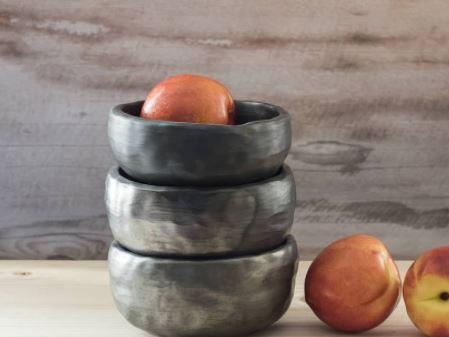
What Is The Ideal Design For Food-safe Pottery?
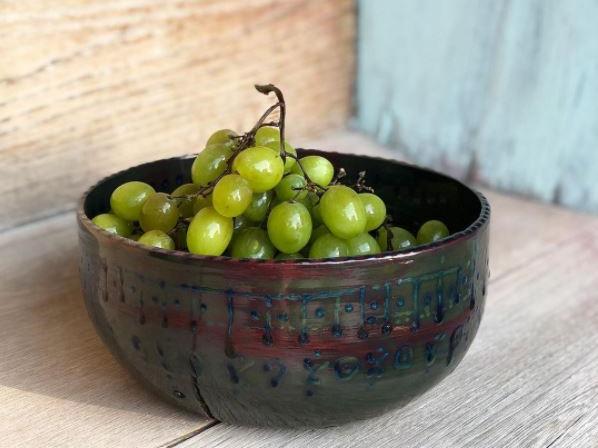
Pottery has unlimited designs and intricate patterns. However, some risks might accompany groovy or curvy patterns. If there are multiple clefts or nooks in the pottery, it isn’t easy to wash them properly. Most of the time, the food is left inside these crevices, so harmful bacteria accumulate.
This can poison the pottery, and as a result, any further use will infect the whole meal. Therefore, making the pottery in simpler designs with a smooth finish and evened edges is preferred. Pottery with fewer curves and nooks will be easier to wash and safe for food.
Another complication that might result from intricate pottery designs is that continuous cleaning can wear off the pottery. So the delicate structures are not long-lasting or durable. They serve the purpose for a short time only and break easily. Therefore, the integrity of pottery pieces requires a more traditional design and a simple finish.
Are Acrylic Paints Safe to Use on Glazed Pottery?
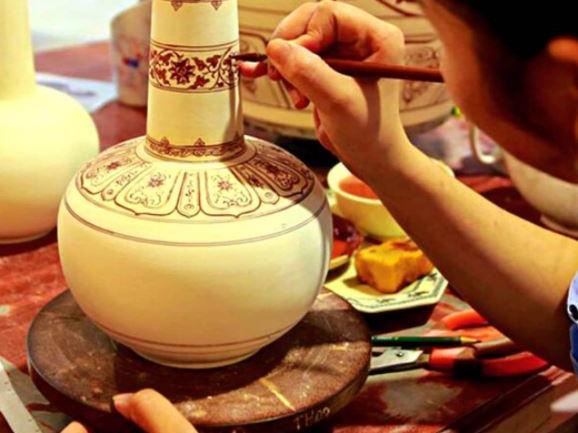 Typically, regular acrylic paints are not suitable for glazed pottery. These paints have poor adhesion and might melt off when in contact with hot food. Furthermore, the patterns made with acrylic paints are vulnerable to tearing off.
In these cases, the most dangerous type is metallic acrylics, which tend to melt away and intoxicate food comprising the FDA standards. Therefore, it is advised not to use ordinary acrylic paints on pottery used for food.
Typically, regular acrylic paints are not suitable for glazed pottery. These paints have poor adhesion and might melt off when in contact with hot food. Furthermore, the patterns made with acrylic paints are vulnerable to tearing off.
In these cases, the most dangerous type is metallic acrylics, which tend to melt away and intoxicate food comprising the FDA standards. Therefore, it is advised not to use ordinary acrylic paints on pottery used for food.
How to Paint The pottery to Make It Safe for Food?
There are special paints which are insoluble and permanent which you can find in any good art supply store. These can be used feasibly with the help of a paintbrush to create beautiful designs on pottery. The best technique to secure the designs on pottery is to apply the glaze carefully and bake the pottery in a kiln, which will give the pottery a glassy finish and helps to secure the designs. Glazing also assists in creating a neat finish and increases the functionality of pottery.Which Can Be the Perfect Glaze for Your Food Safe Pottery?
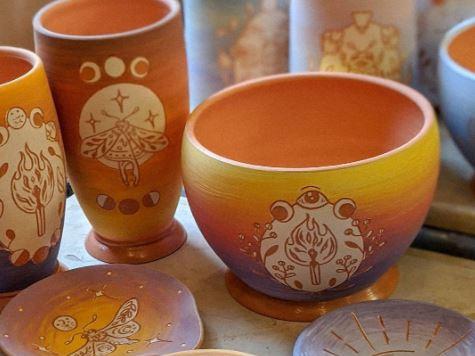
The glaze is a liquid suspension that solidifies in a glass finish upon heating at a high temperature. Although the glazes are firm and protect your pottery, there are a few points to ponder:
1. The glaze should not be soluble in acid and must resist the acidic nature of food. 2. It should be adhesive and thick in consistency to offer the required robustness to the pottery 3. It must not contain any toxic material that might melt into the food. 4. The glaze should be long lasting and must withstand continuous washing and rubbing 5. Choose the perfect type (low-fire, mid-fire, or high-fire) of glaze according to the temperature and purpose of use. 6. The glaze should be free of lead and should not contain any hazardous chemicals
Suggestions:
Making pottery on a pottery wheel can be a challenging job. Coming up with top-notch and food-safe pottery requires generous consideration. Are you looking for tips and suggestions to make the best pottery? Do you want to ensure the hygiene measures and make pottery safe for food?
If yes, then we have got you covered with many tips and techniques to make the best pottery.
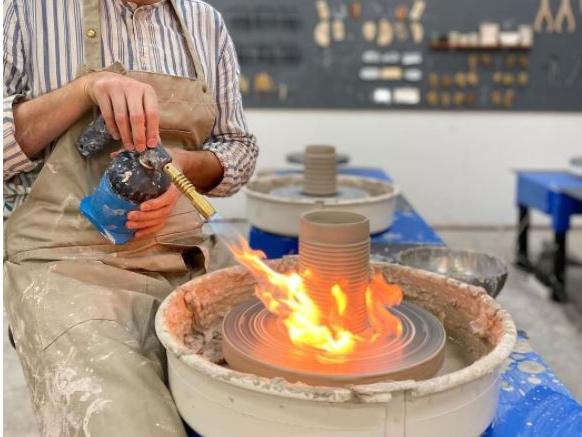
- Temperature management:
- Experiments to check the glaze:
Conclusion
Pottery made on pottery wheels can be safe for food only if it meets the FDA regulation. The working platform, as well as the equipment, must be hygienic to ensure safety and health. The use of years-old pottery can also be harmful as these are the main sites of bacteria formation. The above article will help you achieve a better insight to develop safe and durable pottery.

